Call for Papers Session
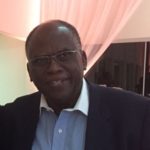
Call for Papers Session
This panel will present a set of scientific papers that have been submitted to the Call for Papers promoted annually by SET.
The selected works will be published in the SET International Journal of Broadcast Engineering (SET IJBE) an international scientific journal whose objective is the diffusion of knowledge on communications engineering, especially of the broadcast areas and new media.
The SET IJBE search current research that comprise the state of the art of these technologies.
Chair: Ronald Siqueira Barbosa - SET Teaching Committee / Professor of Optical Communication, Television Systems, Communication Principles and Antennas
Graduated in Electrical Engineering (Electronics) from the University of Brasília, Master of Science (MSc) from the Military Institute of Engineering of Rio de Janeiro. He has extensive experience in the broadcasting market as a consultant and participates in broadcasters and engineering associations coordinating various work groups. He is Assistant Professor II of the University Center - Institute of Higher Education of Brasília - IESB, since 2012, where he teaches the subjects of Optical Communication, Television Systems, Communication Principles and Antennas, and Adviser of Completion Works - TCC and participation in TCC Examination Boards at IESB. Current member of the SET teaching committee.
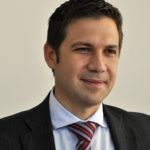
Algorithms, artificial intelligence and NLG in the production of Brazilian journalism
This work evaluates the scenario and the possibilities of using technologies such as algorithms, artificial intelligence and NLG language in Brazilian media companies. Exploratory and descriptive research was carried out, as well as participant observation and documentary data analysis of 10 organizations. Among the results achieved, there is disbelief and skepticism with the algorithms, together with the scarce possibility of adopting this technology in the short and medium term for news production
Speaker: Lucas V. de Araujo - Professor of the State University of Londrina, the Cásper Líbero College and the FAG University Center
Lucas Vieira de Araujo holds a PhD in Communication from the Methodist University of São Paulo. He was born and began his studies in Londrina (PR), where he graduated in Journalism and a Masters in Literature from the State University of Londrina. Worked on TV stations such as Globo TV, Record TV and RBS Group. He is currently a professor at State University of Londrina, Cásper Líbero College and FAG University Center. Author of the book Innovation in Communication in Brazil, pioneer in the country in empirical research in the area.
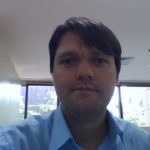
Optimization of the propagation model choice by measuring field and artificial intelligence
The propagation model to be chosen in the design of a terrestrial television station is a critical point for predicting the coverage area. This paper presents a study of the choice of propagation model, through the use of artificial intelligence (AI). Using the propagation model criterion that presents the smallest error between the field measurement and the software simulation, an IA method of classification learning was developed.
Speaker: Alberto Leonardo Penteado Botelho - Project Engineer at LM Telecomunicações
Alberto Leonardo Penteado Botelho is a master student in electrical engineering at Universidade Presbiteriana Mackenzie. He holds a degree in Electrical Engineering from the Universidade Paulista, specialized in Engineering of Digital Television Systems by the National Institute of Telecommunications, Engineering of Telecommunications Networks by the National Institute of Telecommunications and MBA in Project Management by Fundação Getúlio Vargas. Worked on Rede TV! and currently works at LM Telecomunicações (RecordTV group) as a project engineer.
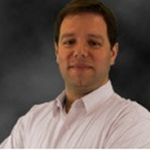
Design of Stepped Impedance Microstrip Low-Pass Filter for Coexistence of TV Broadcasting and LTE Mobile System Close to 700 MHz
The evolution of mobile networks has demanded more frequency spectrum and in many countries part of UHF band previously allocated to TV broadcasting now is used to broadband mobile networks and is important avoid any interference caused by signals transmitted in adjacent bands. In the Brazil and in others countries the new spectrum is being assigned to Long Term Evolution (LTE) mobile networks at 700 MHz band that is close to the frequency spectrum used by TV broadcasting. In this context the paper presents a microstrip low-pass filter to be used into television and avoid interferences produced by LTE signals. The proposed low-pass filter was designed using microstrip step-impedance method, fifth-order Chebyshev with ripple of 0.01 dB and cut-off frequency at 700 MHz. The designed low-pass filter was simulated using full wave simulator Ansoft HFSS. After simulation the low-pass filter was fabricated by photolithographic process in a FR-4 pcb. Finally, it was tested using vector network analyzer and the measured results presented a good agreement with the simulations.
Speaker: Paulo Eduardo dos Reis Cardoso - PhD Candidate in the LCVDECOM-FEEC-UNICAMP
Holds a degree in Electrical Engineering from the FEEC-UNICAMP (2002) and a MSc degree in Electrical Engineering (Electronics) by DEMICFEEC-UNICAMP (2005). He is currently a PhD candidate in the LCVDECOM-FEEC-UNICAMP, searching Digital TV. Licensed from the post of Specialist in Regulating in the Anatel, where it operates in coordination of grants and resources to the provision, working with the licensing and amendment of technical characteristics of broadcasting stations. Previously, he served in the surveillance in broadcasters. He was responsible for the Technical Regulation to Broadcasting in Modulated Frequency and analysis of processes of technical feasibility for inclusion or amendment of the Basic Plan of Distribution Channels of Broadcasting in Modulated Frequency. He participated as an observer in the Federal Government in testing of Digital Radio Broadcasting, both in tests of American Standard - HD Radio, in 2008 and 2012, as in tests of the European standard - DRM, in 2010. He has worked as a telecommunications researcher of the Fundação Centro de Pesquisas e Desenvolvimento - CPqD.
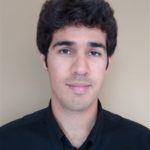
Improvement of the Content Transmission in Broadcasting Systems: Potential Proposal to Rayleigh and Rician Multichannel
A model based on discrete events was developed and applied to a broadcasting system, using the Simulink simulation environment of the MATLAB software. With the objective of improve the transmission of content, through a pre-coding process of bits applying discrete events in the signal before of the modulation process, with the implementation of discrete entities in the process of bit generation. The results show better computational performance related to time and memory utilization, related to the compression of the information.
Speaker: Reinaldo Padilha - PhD Candidate at Departament of Communication (DECOM) da Universidade Estadual de Campinas (UNICAMP),
Graduated in Computer Engineering (UNIPINHAL - 2014). Currently, is a Ph.D. Candidate by Department of Communications (DECOM), Faculty of Electrical and Computer Engineering (FEEC) at State University of Campinas (UNICAMP), and a researcher at the Laboratory of Visual Communications (LCV). He also is currently Proceedings Chair of the Brazilian Symposium on Technology (BTSym). Has interest and affinity in the area of technological and scientific research, as well as knowledge in programming, simulation, operating systems, software engineering, broadcasting and telecommunication’s systems.
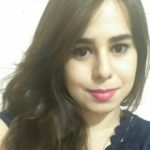
Proposal of A Medical Algorithm Based on the Application of Digital Image Processing and Visual
The erythrocytes counting and leukocytes help detect various types of diseases. Given the wide applicability of the Watershed Transform (WT) and Morphological Operations (MO), was developed the WT-MO algorithm for segmentation, detection, and counting of blood cells. The WT-MO algorithm results in high accuracy (93%). Therefore, the algorithm is accurate, reliable and a low-cost technique, which can be applied as a third methodology to perform the laboratory tests and to speed up further medical diagnostic.
Speaker: Ana Carolina Borges Monteiro - Master´s student at the Faculty of Electrical Engineering and Computation at the State University of Campinas – UNICAMP
Graduated in Biomedicine. She is a Master´s student at the Faculty of Electrical Engineering and Computation at the State University of Campinas – UNICAMP. Currently, develop research projects related to algorithms for the detection of blood cells through digital image processing techniques. She is a researcher at the Visual Communications Laboratory (LCV). She works at the Brazilian Technology Symposium (BTSym) as a member of the Organizing and Executive Commitee and as a member of the Technical Reviewers Committee.
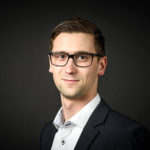
Field Tests for Immersive and Interactive Broadcast Audio Production using MPEG-H 3D Audio
Next Generation Audio offers new features for the consumer such as advanced user interactivity, immersive sound and optimized reproduction across different playback devices. This paper outlines the workflow for MPEG-H 3D Audio content creation with a focus on broadcast production for live and offline applications. It is shown, how new tools can be integrated into well-established production workflows and how they ensure full control of produced mixes. Production scenarios are presented by using examples of an international music competition and a major tennis event.
Yannis Grewe - Fraunhofer Institute for Integrated Circuits IIS
Yannik Grewe was born in Böblingen, Germany, in 1991. He received the B.Sc. degree in audiovisual media engineering from university of applied sciences Offenburg, Germany. He joined the Fraunhofer Institute for Integrated Circuits IIS in 2013 as a scientist and field application engineer for MPEG-H 3D Audio. Y. Grewe is mainly enrolled in developments of production tools for Next Generation Audio, field tests for MPEG-H 3D Audio, 3D sound for broadcasting and virtual reality.
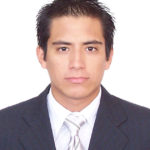
A Technical Study on Cooperative Structure of a Hybrid Network for Video Content Delivery.
Cooperative structure of hybrid network is a topic of current interest in academia and industry since can serve to enhance content delivery technologies in order to face the ”mobile data tsunami”. This paper considers the latest technologies either in the broadcast and broadband environment to encourage the use of flexible bootstrap in the physical layer.
Diego Arturo Pajuelo Castro - PhD Candidate at Universidade Estadual de Campinas (UNICAMP)
Diego Arturo Pajuelo Castro is a doctoral student at the Department of Communications (DECOM) of the Faculty of Electrical Engineering and Computing (FEEC) of the University of Campinas (Unicamp) and works as a researcher at the Visual Communications Laboratory (LCV). He worked a few years at one of Peru's leading Network Operations Center (NOC), Telefonica, which provides digital television service for the Latin American Region. His research interests are new technologies for television systems, cooperative networks, video coding and high dynamic range (HDR) content.

